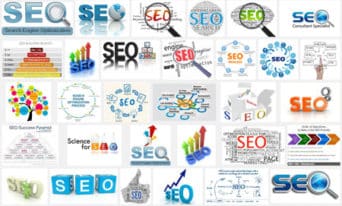5 Simple Strategies to Increase Your Email Open Rate
by Jessica Lawlor
Insights / Digital Marketing /

Even in today’s world where social media seems to dominate, email marketing is still one of the most widely-used and effective means of business communication.
But with so many brands bombarding inboxes with e-blasts and newsletters, it’s easy to end up in the trash bin.
Avoid the dreaded delete button (or worse — the unsubscribe button!) by making sure your emails stand out from the crowd.
Here are five simple strategies to increase your email open rate.
1. Pay close attention to your subject line
Your subject line is your first impression on a reader, so you need to make it a good one. A subject line can often make or break whether your email even gets opened.
Here are some quick tips for crafting compelling subject lines.
- Keep it short and simple. Most people will only scan the first few words of your subject line, especially if they’re reading it on their smartphone, so you need to be able to capture their attention immediately.
- Avoid spammy language. It can be tempting to load up your subject with exclamation points and FREE in all caps. Be strong. Don’t do it. Take the extra time to think of a more creative way to convey your message.
- Get creative! Did you know you can add emojis to your email subject line? According to a report from Experian, 56 percent of brands using emoji in their email subject lines had a higher unique open rate.
- Personalize your message. If you’ve captured your subscribers name when they signed up for your list, you can tailor your email directly to them by using their name in the subject line. Warning: This method can be effective, but think about your line of business and consider whether or not it may come off as creepy.
Note that you can also test your subject lines with an A/B testing campaign to determine which headline works best for your audience. It’s easy! Here’s how Mailchimp describes this best practice:
Create multiple versions of your campaign that are identical in every way but the subject line, and we’ll send them to randomly selected parts of your list. We’ll automatically send the campaign with the best open rate to the remainder of your list, and you’ll learn a little about what kind of subject line appeals to your subscribers.
2. Use a recognizable reply-to address
Nothing will encourage readers to delete your email faster than a do-not-reply@ or info@ email address.
It just feels…impersonal and icky.
Make your message seem personal from the get-go by using a real name or real name and company name combination as the sender i.e. “Jessica Lawlor” or “Jessica at JL&Co” if I were sending out the email.
If you can’t send your email directly from a specific person, be sure to tie it to your brand in an easy-to-recognize way.
Email marketing company Aweber explains why do not reply addresses fail perfectly:
‘Do not reply’ addresses take a permission-based, conversational marketing medium and mold it into an online version of TV or billboard advertising. These addresses treat subscribers’ questions and feedback as costs.
Plus, Aweber says do not reply addresses can actually impact your email deliverability — you definitely don’t want that.
This tip is super easy to implement — no excuses!
3. Optimize your send time
If you’ve been sending out email campaigns to your list for a while now, you should have some solid data on which days of the week and times of the day garner the highest open rate.
However, don’t be afraid to experiment! For years, I sent out emails to my blog email list on the same day and time every other week. My open rate stayed pretty consistent (and my readers knew when to expect me), but after awhile, I switched things up a bit and experimented with other days of the week and times.
Turns out, those days and times worked well for my audience too! Some of those dates and times worked even better, in fact. Now, I keep a close eye on days/times and my open rates to make informed decisions about when to send my emails.
Want to get even more scientific? Refer above to that handy A/B Testing campaign for subject lines. That same experiment goes for send time, as well!
Some email marketing tools also offer paid features to drill down even further. For example, Mailchimp offers Send Time Optimization, which analyzes data from other Mailchimp users and campaigns to figure out the best time for you to send your email.
Brand new to email marketing and have no data to work off of yet? No worries. Take the time to research best practices in your specific industry to determine the optimum send time for your message to get started.
4. Offer a benefit to the reader
This may seem like a no-brainer, but it’s an often forgotten point of email marketing.
A great subject line does nothing for you if the content in your email doesn’t speak to the reader.
As with any marketing campaign, your email needs to solve a problem or offer a benefit to those allowing you space in their inbox.
After all, what’s the point in getting someone to open your email if they don’t take action?
If you’re constantly sending out sales-y or generally uninteresting emails, your audience will eventually tune out and it will be nearly impossible to reel them back in.
Prove to your audience that it will be worth their while to consistently open your emails by offering great content with every send. Depending on your business or industry, consider offering a gift every once in awhile — some type of freebie, special deal or coupon can often help keep your audience engaged.
5. Keep your emails simple
Just like you only have a few words to attract attention with your subject line, your email message (and email design) itself needs to be clear, concise and simple.
Consider that 54 percent of emails are opened on smartphones. This is not the place to write a novel. Instead, your emails should offer a succinct synopsis of your content and a link back to your website for further reading or information where applicable.
Remember that while the end goal of your email campaign may be to generate leads or convert customers, you often won’t get that outcome on the first try. Instead, focus on fostering a positive relationship with your readers over time. Your readers and your bottom line will thank you for it.
At the end of the day, email marketing (and much of marketing, in general) is all about trial and error. You’ll never know what works best for your audience if you don’t try out different options.
Do you have other tips and tricks for getting your emails opened? Let us know on Twitter.
Photo by Chad Madden on Unsplash




